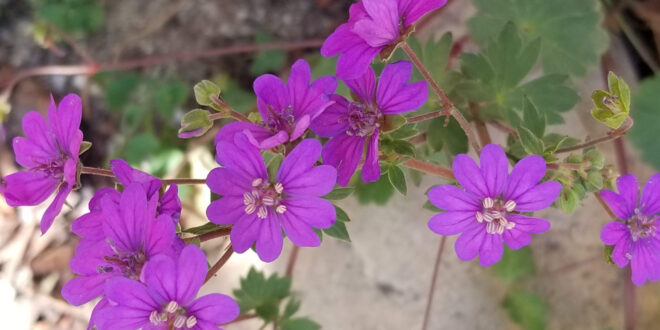Phlox subulata is a short plant, and its stature is reflected in its common names: “creeping phlox,” “moss phlox,” “moss pinks,” “ground pink,” and “ground phlox.” Don’t let the “pink” label fool you: This perennial does come in other colors. Not surprisingly, Phlox subulata functions primarily as a flowering ground cover. You’ll often see this spring bloomer blanketing banks with its colorful flowers. We have ours in a pot in front of a large Hollyhock.
Best grown in humusy, medium moisture, well-drained soils in full sun. Best flowering is in full sun, but plants generally appreciate some dappled sun in areas with hot, humid summers. Good soil drainage is important. Plants grow well in sandy or gravely soils and tolerate hot, dry exposures better than most other species of phlox. Plants will self-seed in optimum growing conditions. Cut back stems after flowering by 1/2 to maintain form and promote denser growth plus to stimulate a possible light rebloom.
We got our plant from Yamagami Nursery in Cupertino.
- Common Name: moss phlox
- Type: Herbaceous perennial
- Family: Polemoniaceae
- Native Range: Eastern and central United States
- Zone: 3 to 9
- Height: 0.25 to 0.50 feet
- Spread: 1.00 to 2.00 feet
- Bloom Time: March to May
- Bloom Description: Red-purple to violet-purple to pink to white
- Sun: Full sun
- Water: Medium
- Maintenance: Medium
- Suggested Use: Ground Cover, Naturalize
- Flower: Showy
- Attracts: ButterfliesTolerate: Deer, Drought, Erosion, Air Pollution








